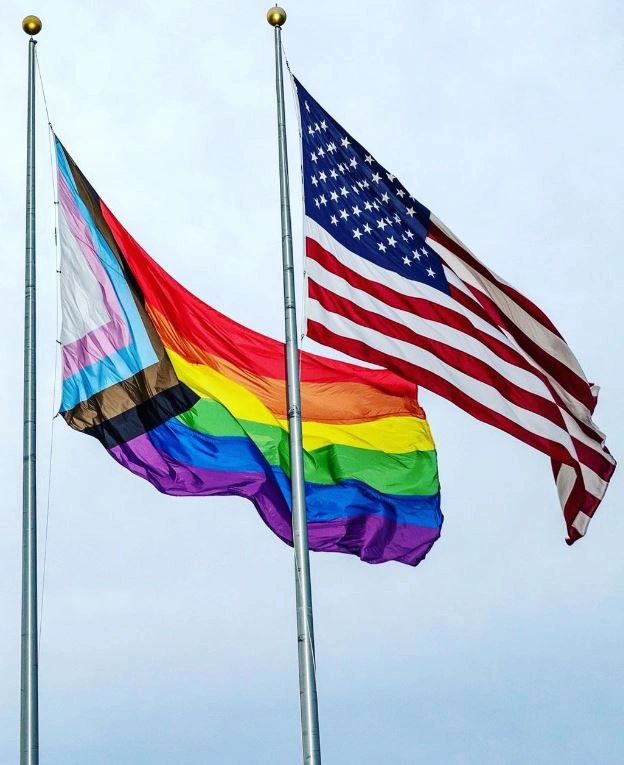Fire Island Pines and Cherry Grove: A Safe Harbor
Two of Long Island’s beaches have an important place in LGBTQ+ history and hearts

Growing up on Long Island, I was lucky to live only 20 minutes from many beaches, including Long Beach, Jones Beach and Point Lookout. My entire childhood was spent in close proximity to the water and greatly inspired my love for our ocean and my desire to work at an organization focused on protecting it.
As I grew into an adult, I discovered another set of beaches on Long Island: the shores of Fire Island. It’s one of New York state’s most popular summer getaways, a thin barrier island on the Atlantic Ocean. This seaside village is linked by boardwalks, sandy beaches, natural dunes, water taxis and (almost) no automobiles.
Get Ocean Updates in Your Inbox
Sign up with your email and never miss an update.
Today, I’m thrilled to work at Ocean Conservancy where we are fighting for a healthier ocean protected by a more just world. While we have been celebrating Pride month, we’ve also been reflecting on the undeniable link between discrimination and our beaches and coasts. Marginalized groups experienced prejudice and racism by being segregated, banned or forcibly removed from beaches. While some of these individuals managed to find their own spaces to enjoy the ocean, it was not without challenges and trauma. As June is both Pride Month and World Ocean Month, I’ve been thinking about my own experience as a member of the LGBTQ+ community. Where have I felt most welcome? What is the history behind some of these special beaches? How can we learn from their history and apply it to our present-day challenges?
As Pride month concludes, I would like to take a moment to reflect on the rich history of two Fire Island beaches that are sanctuaries and safe spaces for members of the LGBTQ+ community: Pines and Cherry Grove.
The incredible story of these two beaches begins with the original Indigenous inhabitants who shaped the historical, cultural and natural landscape we are privileged to enjoy today: the Unkechaug, Secatogue and Shinnecock tribes.
It wasn’t until the 1938 New England Hurricane destroyed much of Cherry Grove and the Pines that it was reborn as a gay destination. The hurricane discouraged main landers from coming to visit, and a new generation started coming from New York City that landlords couldn’t afford to discriminate against—a growing gay population.
From the 1940s onward (more than 25 years before The Stonewall Riot, which is considered the commencement of the gay rights movement) the Pines and Cherry Grove became a haven for a discriminated group desperately seeking a safe retreat. These idyllic spaces helped LGBTQ+ individuals find each other and create a community together where many could experience acceptance and freedom for the first time in their lives. Its unique geography and isolation from the mainland fostered a safe harbor in a time when dignity and respect for LGBTQ+ folks was hard to find.

These beaches have played a big part in the LGBTQ+ experience. Not only are these beach towns considered among the very first spaces to welcome a majority population of gay men and lesbians, but performances here paved the way for the modern drag scene—particularly the origin of its popular annual July 4 “Invasion.” During the summer of 1976, a restaurant in the Pines denied entry to a visitor in drag. When their friends heard about it, they too dressed in drag, hopped on a ferry and stormed the island to a buoyant welcome. It is now one of Fire Island’s most beloved traditions—and a reminder of the work still left to be done.
No place is a utopia, and while the Pines and Cherry Grove come close, there is still room for improvement—not only for trans and queer individuals across all spectrums, but also for increased accessibility and diversity. A stay on the island can quickly become expensive, and property ownership is overwhelmingly white. And while there are options and help available, the reality of navigating the boardwalks if you are a person with disabilities is challenging. However, if there is one place in the world where inequality will be acknowledged and addressed, it is here.
Personally, I have visited the Pines and Cherry Grove every summer since 2016, and although I have had the privilege of growing up in a time when living authentically as a gay person is much easier, there is no substitute for that magical feeling of belonging that one experiences when the ferry pulls up. When you live your life being seen and treated as a “minority,” it is difficult to describe how different and freeing it feels when you are in a safe space that allows you to become “the majority.” I spoke with several people who have been visiting Fire Island for decades, and they all shared about the freedom they feel when that burden is lifted as they arrive on the island and can safely be themselves. That’s why places like Fire Island Pines and Cherry Grove are so important and why their history deserves to be told.The island has other unique characteristics—it’s also home to New York state’s only federally-managed stretch of wilderness, which includes protected beaches, dunes and maritime forests—but its ability to bring together and cultivate community for LGBTQ+ individuals is truly what makes Fire Island so special.
Even here, I have only scraped the surface of the positive impact it continues to make on so many lives, including my own.